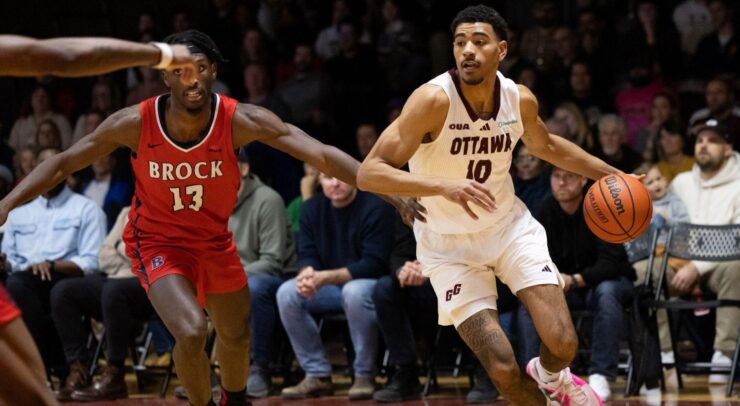It’s time for media giants to recognize university sports as a valuable asset
After their regular season television deal with Rogers fell through in 2014, Canadian Interuniversity Sport (CIS) has established a new deal with City. From Sept. 17 to Oct. 15, the television network will nationally televise four CIS football regular season games, including the Panda Game between Ottawa and Carleton on Oct. 1.
When Rogers axed the deal in 2014, they still lended CIS football and basketball playoff rights to their affiliate Sportsnet. But now, given the popularity of the games, they have extended the deal to City, another one of their affiliates.
Fans are hoping this will lead to more coverage of other Canadian university sports. If networks are smart, that may just be exactly what happens.
Rogers chose not to continue its contract with CIS because of high production costs and a small initial audience. However, given the current television landscape, broadcasters may have no choice but to continue to increase coverage of university sports in Canada.
After all, they need only look south of the border to see the potential upside of such coverage, especially for football.
ESPN paid $5.6 billion for broadcast rights to just the college football playoffs, the ratings reflected the worth of the purchase with 33.4 million viewers tuning in for the 2015 playoffs. Ratings slipped this year, due mostly to bad decisions in broadcast timing, but the money still makes sense. If something similar were to happen in Canada, broadcasters likely wouldn’t have to eclipse the million mark for regular season and playoff coverage.
Often, the nature of entertainment businesses is that everyone is focused on holding exclusive rights to programming—that’s why actors and athletes can command grandiose salaries.
In the case of Canadian broadcasters, the high fees go towards valuable properties like rights to broadcast the NHL and other major league sports. This feeds a cycle, and these properties become more and more viewed due to the high exposure, and thus command higher and higher prices.
That’s why certain networks work tirelessly on developing new properties. NBC has Saturday Night Live, where they develop unknown comics, grow a fanbase, and, as a result, don’t have to pay them ridiculous salaries.
This means that they need fewer of these ultra expensive properties, since they have created some of their own. Canadian broadcasters would be smart to follow a similar model with sports.
Not only that, but once they get national coverage, universities will build the property up themselves. Having games televised can incentivize better players to play at the schools, raising the level of competition and quality of the broadcast.
There are regionally broadcasted games throughout the Western provinces, as well as in Quebec, so the teams reaping the most benefit of the new deal are those in Ontario and the Atlantic provinces.
Football is a great jumping off point, but there are whole host of sports that can provide a content base ready to be grown into a profitable property.
But why is sports a good potential program to develop? Well, with the advent of online competitors like Netflix, which allow users to stream shows anytime they want and are commissioning more of their own content, TV networks only have one big advantage left—live events, especially sports.
No one wants to see the Super Bowl a day late, and that whole “in the moment” reaction is the greatest advantage TV networks have over Internet streaming services, which is why sports are such a great fit.
If Canadian TV networks don’t develop their sports content, they will all be left chasing whales like the NHL. And even if their bids are successful, they’ll be spending vast amounts of money to fill only a portion of their total air time.
If TV stations have any common sense, you’ll be seeing a lot more Canadian university sports on your TV screen in the not too distant future.





